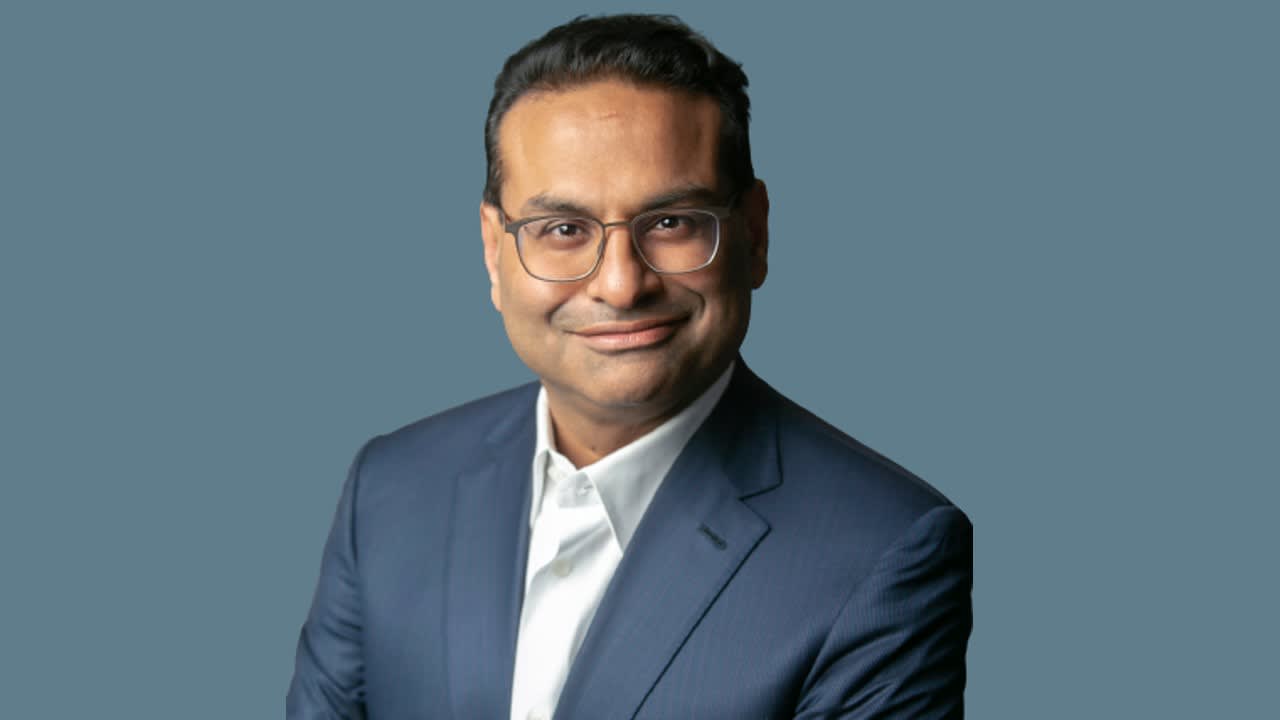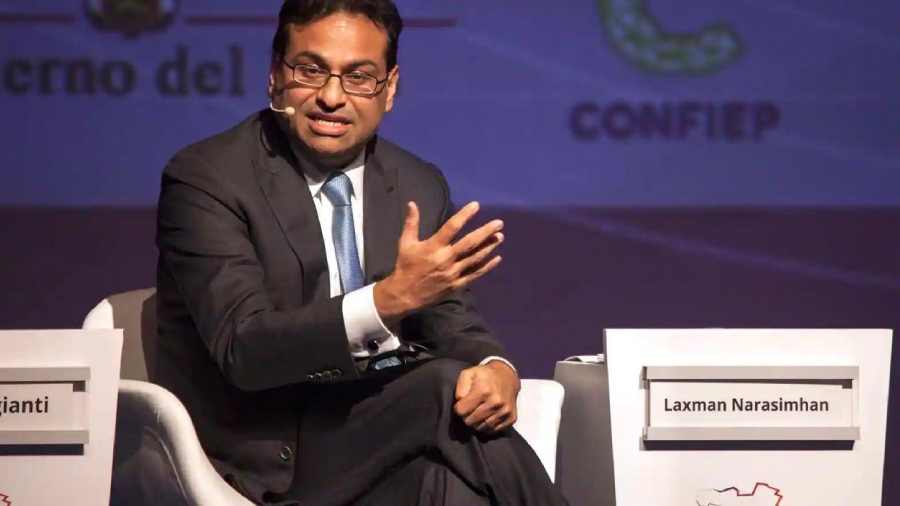Laxman Narasimhan’s Career Trajectory

Laxman Narasimhan, the newly appointed CEO of Starbucks, boasts a remarkable career trajectory marked by leadership roles in diverse industries, showcasing his adaptability and strategic acumen. From his early days at PepsiCo to his recent stint at Reckitt Benckiser, Narasimhan’s journey is a testament to his ability to navigate complex business environments and drive growth.
Key Positions and Achievements
Narasimhan’s career began at PepsiCo in 1999, where he honed his skills in marketing and strategy. He rose through the ranks, eventually becoming President of PepsiCo’s Quaker Foods North America. During his time at PepsiCo, he spearheaded the successful launch of several new products and spearheaded strategic initiatives that boosted the company’s market share.
- PepsiCo (1999-2012): Joined PepsiCo in 1999 and quickly rose through the ranks, eventually becoming President of PepsiCo’s Quaker Foods North America. He was instrumental in launching several successful new products and driving strategic initiatives that boosted the company’s market share. He left PepsiCo in 2012 to pursue new challenges.
- P&G (2012-2019): Joined P&G in 2012 as Global Chief Strategy Officer and later became CEO of the Global Coffee Business. He led the turnaround of the struggling coffee business, which included the acquisition of the Folgers brand, and expanded P&G’s presence in the global coffee market.
- Reckitt Benckiser (2019-2022): Became CEO of Reckitt Benckiser in 2019. He led the company through a period of significant growth and expansion, including the acquisition of several new brands. He also implemented a new strategy to focus on digital transformation and innovation.
Experience in Leading Global Organizations
Narasimhan’s career has been characterized by leading global organizations across various industries, including food and beverages, consumer goods, and pharmaceuticals. His experience in these diverse sectors has equipped him with a broad understanding of global markets, consumer trends, and competitive dynamics.
- PepsiCo (Food and Beverages): His experience at PepsiCo provided him with a deep understanding of the food and beverage industry, particularly in the areas of marketing, branding, and distribution. He honed his skills in navigating complex supply chains and managing large-scale operations.
- P&G (Consumer Goods): At P&G, he gained valuable experience in the consumer goods industry, specifically in the area of brand management and product development. He led the turnaround of the company’s struggling coffee business, demonstrating his ability to revive underperforming businesses.
- Reckitt Benckiser (Pharmaceuticals and Consumer Goods): His leadership at Reckitt Benckiser exposed him to the challenges and opportunities in the pharmaceutical and consumer goods industries. He led the company through a period of significant growth and expansion, demonstrating his ability to navigate complex regulatory environments and manage diverse product portfolios.
Leadership Style and Approach to Management, Ceo laxman narasimhan
Narasimhan is known for his data-driven approach to decision-making and his emphasis on collaboration and innovation. He is a strong communicator and a skilled motivator, known for his ability to build consensus and drive change within organizations. His leadership style has been described as “transformational,” with a focus on empowering employees and creating a culture of continuous improvement.
“I believe that leadership is about creating a vision, inspiring others to achieve it, and empowering them to make it happen,” Narasimhan has said.
- Data-Driven Decision-Making: Narasimhan is known for his reliance on data and analytics to inform his decisions. This approach allows him to make informed decisions based on evidence rather than intuition, leading to more effective and strategic outcomes.
- Collaborative Leadership: He emphasizes collaboration and teamwork, believing that the best solutions emerge from diverse perspectives. This approach fosters a culture of innovation and creativity within organizations.
- Focus on Innovation: Narasimhan is a strong advocate for innovation and is committed to investing in new technologies and ideas. He believes that innovation is essential for long-term success in a rapidly changing business environment.
Narasimhan’s Leadership at Starbucks: Ceo Laxman Narasimhan

Laxman Narasimhan, appointed CEO of Starbucks in October 2022, has taken the helm of the coffee giant during a time of significant industry disruption and evolving consumer preferences. He inherited a company with a strong brand but facing challenges in navigating the post-pandemic landscape. Narasimhan’s leadership style and strategic initiatives have been closely watched as he aims to revitalize the Starbucks experience and drive sustainable growth.
Key Initiatives and Their Impact
Narasimhan has embarked on a multi-pronged strategy to address the challenges facing Starbucks. His initiatives focus on enhancing the customer experience, improving operational efficiency, and fostering a more inclusive and engaged workforce.
- Customer Experience Enhancement: Narasimhan has prioritized elevating the Starbucks experience by focusing on personalized service, enhanced digital offerings, and expanded menu options. The company has invested heavily in technology to improve order accuracy, reduce wait times, and enhance the mobile ordering experience. Additionally, Starbucks has introduced new beverages and food items, including plant-based options, to cater to evolving consumer tastes. These efforts have resulted in increased customer satisfaction and loyalty, contributing to positive sales growth.
- Operational Efficiency and Cost Optimization: Narasimhan has implemented measures to streamline operations and reduce costs, particularly in areas like supply chain management and labor optimization. The company has invested in automation and technology to improve efficiency and reduce reliance on manual labor. Starbucks has also focused on optimizing store layouts and staffing levels to ensure cost-effectiveness. These initiatives have contributed to improved profitability and margin expansion.
- Employee Empowerment and Inclusion: Recognizing the importance of a strong and engaged workforce, Narasimhan has implemented programs to enhance employee training, development, and compensation. The company has also prioritized diversity and inclusion initiatives, aiming to create a more equitable and welcoming workplace. These efforts have fostered a more positive and productive work environment, contributing to improved employee retention and satisfaction.
Narasimhan’s Leadership Style Compared to Howard Schultz
Narasimhan’s leadership style differs significantly from that of his predecessor, Howard Schultz. While Schultz was known for his charismatic and visionary leadership, often leading with his heart and passion for the Starbucks brand, Narasimhan is perceived as a more data-driven and analytical leader. He focuses on operational efficiency, technology, and strategic partnerships to drive growth. This shift in leadership style reflects the evolving needs of the company and the industry, as Starbucks navigates a more competitive and complex business environment.
Narasimhan’s Vision for Starbucks’ Future

Laxman Narasimhan, the new CEO of Starbucks, has Artikeld a bold vision for the coffee giant’s future, emphasizing a focus on innovation, customer experience, and operational efficiency. His vision aims to propel Starbucks to new heights, solidifying its position as a global leader in the coffee industry while adapting to evolving consumer preferences and market dynamics.
Key Priorities and Goals
Narasimhan’s vision for Starbucks is anchored by several key priorities and goals that aim to drive sustainable growth and enhance the company’s overall performance. These include:
- Elevating the Customer Experience: Narasimhan recognizes the paramount importance of customer satisfaction and seeks to enhance the Starbucks experience across all touchpoints. This includes streamlining operations, improving in-store ambiance, and leveraging technology to personalize interactions.
- Driving Innovation: Starbucks has always been known for its innovative spirit, and Narasimhan intends to further cultivate this by investing in new products, services, and technologies. This includes exploring new coffee blends, expanding food offerings, and developing digital tools to enhance customer engagement.
- Enhancing Operational Efficiency: To ensure sustainable growth, Narasimhan is committed to optimizing Starbucks’ operations. This involves streamlining processes, improving supply chain management, and leveraging technology to automate tasks and improve efficiency.
- Expanding Global Reach: Starbucks continues to expand its global footprint, and Narasimhan plans to accelerate this growth by entering new markets and expanding existing ones. This involves adapting to local preferences, forging strategic partnerships, and leveraging technology to facilitate global expansion.
Potential Challenges and Opportunities
While Narasimhan’s vision is ambitious, it’s not without its challenges and opportunities.
- Navigating a Competitive Landscape: The coffee industry is fiercely competitive, with numerous players vying for market share. Starbucks faces challenges from established competitors like Dunkin’ Donuts and Peet’s Coffee, as well as emerging independent coffee shops and specialty roasters. Narasimhan must navigate this competitive landscape by differentiating Starbucks’ offerings and providing a unique customer experience.
- Adapting to Changing Consumer Preferences: Consumer preferences are constantly evolving, with a growing emphasis on sustainability, ethical sourcing, and personalized experiences. Starbucks must adapt to these evolving preferences by sourcing its coffee sustainably, promoting transparency in its operations, and offering customized experiences to meet individual needs.
- Leveraging Technology Effectively: Technology plays a crucial role in driving growth and enhancing customer experience. Starbucks must leverage technology effectively to streamline operations, personalize interactions, and develop innovative products and services. This includes investing in digital platforms, mobile ordering systems, and data analytics tools.
- Maintaining Brand Consistency: As Starbucks expands its global reach, maintaining brand consistency across different markets is critical. This requires ensuring that the Starbucks experience remains consistent, regardless of location, while adapting to local preferences and cultural nuances.
Ceo laxman narasimhan – Laxman Narasimhan, the current CEO of Starbucks, carries the weight of a legacy on his shoulders. The company, a beacon of coffee culture and a symbol of American enterprise, has seen its share of challenges. Narasimhan, a seasoned executive with a background in consumer goods, is tasked with navigating this turbulent landscape, drawing upon his experience to revitalize the brand and ensure its continued success.
His journey is intricately tied to the history of the company itself, a history that can be explored further here. Whether Narasimhan can meet the expectations of the coffee giant remains to be seen, but his leadership will undoubtedly shape the future of Starbucks for years to come.
Laxman Narasimhan, the CEO of Starbucks, navigates a world of coffee and caffeine, a world where the aroma of freshly brewed beans often masks the bittersweet realities of corporate leadership. Perhaps he finds solace in the stories of others who have faced similar challenges, like the ceo of Chipotle , who navigates the turbulent waters of fast food and the ever-changing demands of consumers.
Narasimhan, like all leaders, must walk a tightrope, balancing the needs of his company with the desires of his customers, all the while striving to maintain the delicate equilibrium of success.